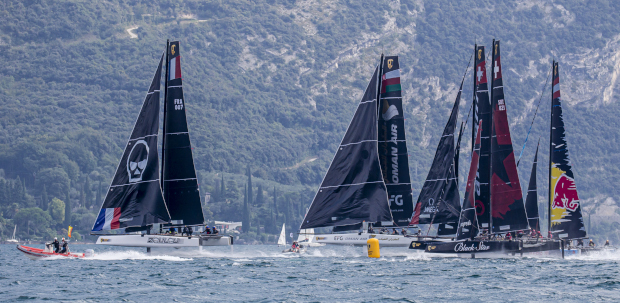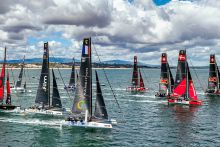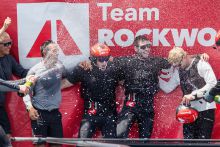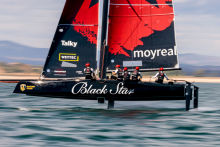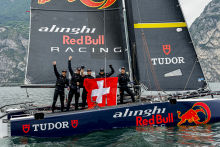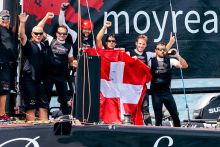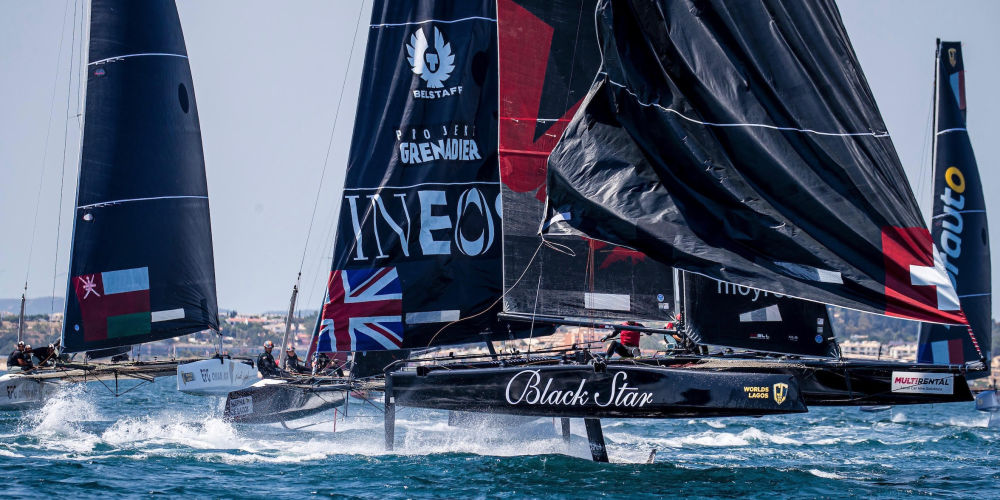
Taking on the GC32 – the road to 40 knots
By on 23 Oct. 2019
Amazingly it was just seven years ago when the first rumours began circulating that Emirates Team New Zealand’s AC72 might be a flying boat. Since then so much has happened with two generation of America’s Cup catamarans having come and gone. They redefined our sport, demonstrating what is possible on foiling airborne boats and today no one bats an eyelid when discussing sailing at 40+ knots, speeds completely unimaginable a decade ago.
And just as Ferrari transfers its F1 technology from track to road, so foiling catamarans have been created (the GC32 being the first) offering similarly extreme performance that regular yachtsmen can attain today for the same price as a 40ft monohull (or less if you look at the brokerage listings here, where secondhand GC32s start from 160,000€).
However buying the boat is only part of the equation. This and going for a burn-up and experiencing the thrill of getting airborne for the first time are the easy parts. As on any boat, to race the GC32 successfully requires skills to be mastered.
For newbie GC32 owner-drivers, the best background is any other type of high performance boat, maintains Andrew Walsh, the British long-term cat sailor who this season has been coaching the GC32 Racing Tour’s newest team – Christian Zuerrer’s Black Star Sailing Team. For example Codigo Rojo’s Federico Ferioli came from F18 and A-Class catamarans, Argo’s Jason Carroll sailed Melges 32s at the highest level while Zoulou’s Erik Maris previously passed through many high performance classes including Extreme 40 and D35 catamarans.
“Sailing is sailing, but you are doing it above the water and there are a few things that are slightly different, but essentially you are still just pointing the boat around a race course, the sails are trimmed in the same way, everything just happens a bit faster because we are up on the foils. Maybe there are a few times when you’d push instead of pull, because we are trying to balance it on the foils, but essentially it is still just sailing, so any sailor will be able to make the transition,” says Walsh, who has also been coaching for Ben Ainslie’s INEOS Team UK.
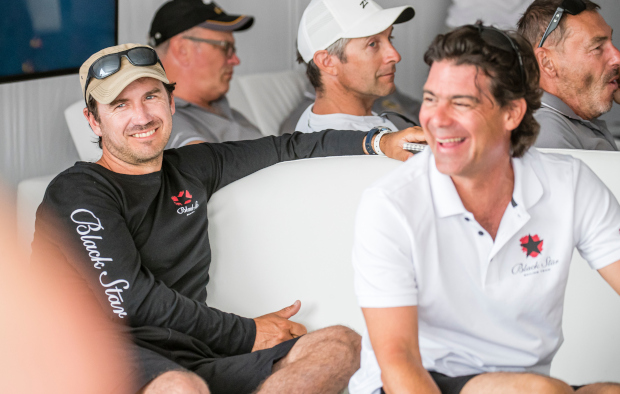
“For sure there are advantages if you’ve sailed any type of fast, asymmetric-type boats because as the helm you have to be able to see things and make snap decisions. But when you get on to the race course, all of the decisions are the same. For example you approach the gybe point and the boat in front of you gybes – you can either carry on past them, match gybes with them or you gybe before. They are the same decisions, they just happen faster.
“You have to put in time to get used to sailing the boat, but Erik [Maris] proves how if you get the right set of sailors around you, you can beat Alinghi and Oman Air around the race track. As an amateur helm, that has to be very satisfying to do.”
The first step towards getting to 40 knots, ie the GC32 airborne, is surprisingly straightforward. “The nice thing about the GC32 is that it is a very easy boat to sail in terms of building your confidence up and getting used to the different boat handling and manoeuvres if you do that in nice open water,” continues Walsh.
However there are things to consider, notably heel angle – ideally the GC32 is being sailed well if there isn’t any. “A dead flat boat means the foils are working efficiently, they are working fast and so you can get to top speed. It also means that every manoeuvre is smooth and easy rather than hard. So it is a case of getting the precision at high speed, getting used to just making small adjustments and staying relaxed while doing it. That soon becomes natural as it does on any other boat.”
After straight line speed, then it is a case of mastering the manoeuvres and for this Walsh recommends some classic training, slowly increasing the pressure: “Start with a big wide course and slowly reduce its length. Essentially it is the manoeuvres and dealing with changes that takes some skill and practice.”
Obviously the killer foiling manoeuvres are the airborne gybes and tacks, however the tacks are a rarity and tend to be race track specific, notably in Riva del Garda where you tack away from the cliff so lifted that you find yourself foiling upwind to the mark. At last month’s event, some teams were coming close to rounding the top mark without touching down. “Oman Air is getting good at something close to a foil tack – certainly the new board is going down in the air – very appreciated by the bow team, because it is a lot easier to do than pulling it down..!”
Foiling gybes are standard in the GC32, but there is big difference between the top teams and those less rehearsed. “The difference between Minoprio and someone in the middle of the pack are the fine details.”
The way a new team can fast track its training is obviously by employing crew who have all sailed the GC32. Today there are many available crew, given the boat is six years old and has previously been used both on the GC32 Racing Tour and Extreme Sailing Series.
On Black Star Sailing Team the arrangement is unique in that Aussie ace Keith Swinton has been brought in to helm, while Christian Zuerrer is on mainsheet. “The way we’ve done it is to get Christian close to the driver so he can get a good feel for how the driver is steering in different situations,” explains Walsh. “The mainsheet role is the next best thing to steering and is a good way for him to build his confidence. As soon as we finish racing, Christian takes the helm and then gains more experience that way.”
Being mainsheet trimmer is still far from an easy ride. “There are five roles on the GC32 and each one is crucial, although you can make them harder or easier depending upon how you set up your choreography.”
For choreography and perfecting manoeuvres regardless of the conditions is the path to success for the faster the boat, the more heavily mistakes are punished. “On the GC32 the five crew have to coordinate themselves perfectly,” continues Walsh. “One little mistake and the boat will fall out of the air. The difference between a good gybe and a bad gybe can be 200m which in a competitive fleet can be the difference between second and fifth. So by keeping air time high or keeping your average speed high by not touching down, you make huge gains. At the top end Alinghi and Oman Air are getting close to perfect throughout the day and that is a very high level because there is so much choreography.”
While it might take time to emulate the consistency and high skill level of the top teams, practice does work and Black Star Sailing Team has been improving over its first season, even finishing individual races on the podium. Like any class, it just requires dedication and patience.
